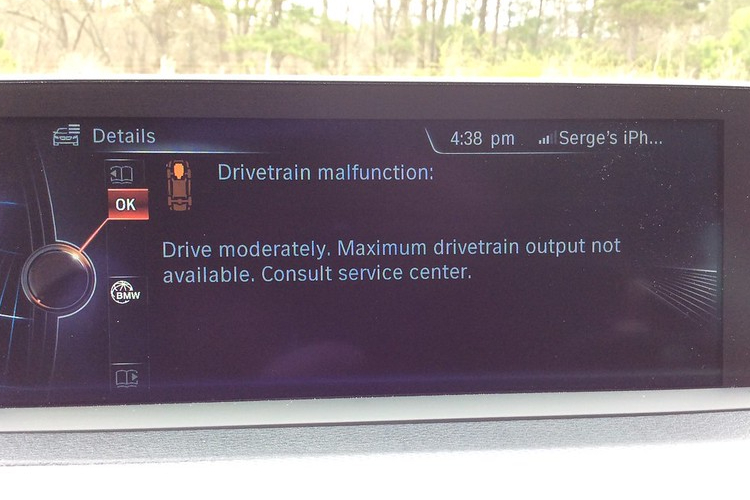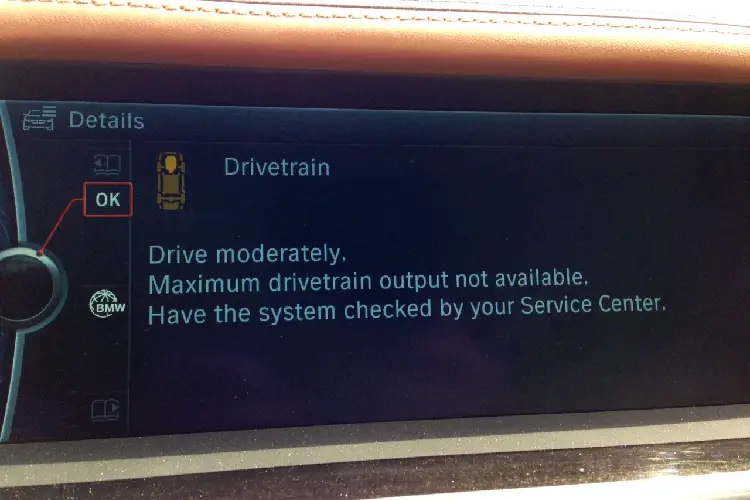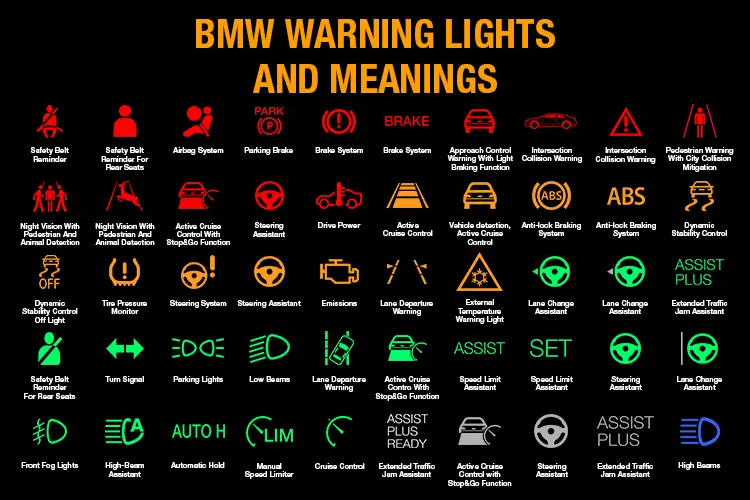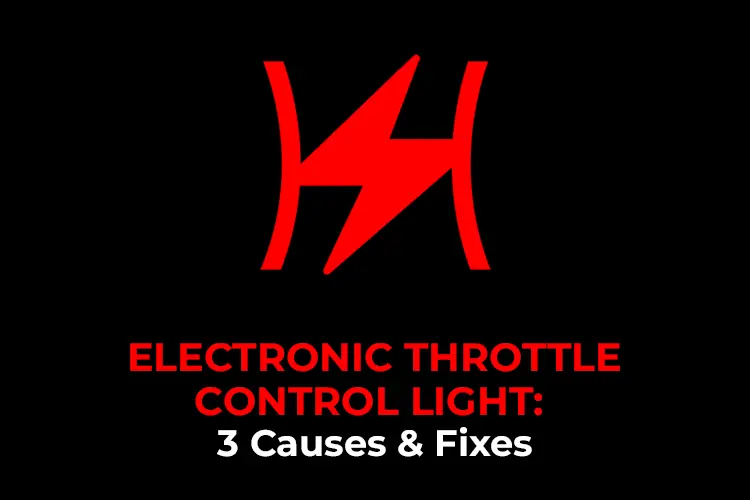Encountering the “Drivetrain Malfunction” warning in your BMW can trigger a mix of concern and curiosity.
But fret no more! I’m here to help.
This article will delve into the meaning of drivetrain malfunctions, offering insights into what causes them and providing step-by-step guidance on how to address these issues effectively.
Let’s dive in!
What Is a Drivetrain Malfunction BMW?

A drivetrain malfunction is very similar to a check engine light on BMWs. Basically, it indicates that there might be an issue with the vehicle’s drivetrain, which is the system responsible for transmitting power from the engine to the wheels.
The drivetrain includes components such as the transmission, driveshaft, axles, differentials, and other related parts.
Typically, this message is paired with limp mode. So your car might feel like it’s not building a boost, misfiring, or not running on all the cylinders. And usually, that’s an indication that something has shut down to put your car into a limp mode to protect it from more damage.
When you encounter the message “Drivetrain Malfunction: Drive moderately. Maximum drivetrain output not available. Consult service center”, it’s essential to be aware of potential accompanying symptoms that could indicate the severity of the issue.
These symptoms might include:
- Reduced Engine Power
- Limp Mode Activation
- Unusual Shifting
- Unusual Noises
- Vibrations or Shaking
- Check Engine Light
- Traction Control Light
- Difficulty Starting
- Decreased Fuel Efficiency
- Erratic Performance
It’s important to note that the severity of these symptoms can vary based on the specific issue causing the drivetrain malfunction message.
If you experience any of these symptoms along with the warning message, it’s advisable to address the issue promptly by seeking professional diagnostic and repair services.
Can I Drive With a Drivetrain Malfunction in BMW?

Yes. You may be able to continue driving for a short distance at reduced speeds to reach a safe location or a repair facility.
However, if you notice significant performance problems, unusual noises, or other noticeable issues along with the drivetrain malfunction warning, it’s advisable to avoid driving the vehicle further.
It’s best to have the vehicle inspected by a professional to ensure safety and prevent potential further damage.
What Causes Drivetrain Malfunction BMW?
As the drivetrain malfunction warning in your BMW can stem from various factors, let’s delve into some of the common causes and their potential solutions:
Bad Spark Plugs
Spark plugs are essential for igniting the air-fuel mixture in the engine’s cylinders. If spark plugs are worn, fouled, or misfired, the engine’s performance can be compromised. This can lead to uneven power delivery to the drivetrain, potentially triggering the warning.
Solution: Replace worn spark plugs with new ones recommended for your BMW model.
Faulty Ignition Coil
Ignition coils generate the high-voltage electrical pulse required to spark the spark plugs. A failing ignition coil can result in misfires or a weak spark, affecting engine performance and potentially leading to drivetrain issues.
Solution: Identify and replace the faulty coil with a new one. It’s recommended to replace all coils if one is found to be faulty, as they tend to have similar lifespans.
Failing Fuel Pump
The fuel pump is responsible for delivering fuel from the fuel tank to the engine. If the fuel pump fails, it can lead to a lack of proper fuel supply to the engine, resulting in poor performance and misfires.
Solution: Diagnose the fuel system, and if the pump is failing, replace it.
Clogged Catalytic Converter
The catalytic converter helps reduce harmful emissions by converting exhaust gases into less harmful substances. A clogged catalytic converter can lead to poor engine performance, reduced power output and indirectly affect the drivetrain.
Solution: Inspect and replace severely clogged catalytic converters.
Bad Fuel Injectors
Fuel injectors deliver fuel into the engine’s cylinders. If fuel injectors are clogged, leaking, or not functioning properly, the engine’s fuel-air mixture can become imbalanced, affecting power delivery and potentially triggering a drivetrain warning.
Solution: Clean or replace fuel injectors based on the issue’s severity.
Low-Quality Fuel
Poor quality or contaminated fuel can lead to issues like engine knocking, misfires, and reduced overall engine efficiency.
Solution: Always use high-quality fuel from reputable gas stations. If you suspect contaminated fuel, consider using a fuel additive designed to remove contaminants.
How to Fix the Drivetrain Malfunction BMW
Step 1: Restart the Engine
Turn off the engine and wait for a few minutes before restarting. In some cases, the warning might be triggered by a temporary glitch.
Step 2: Check the Engine
Look for any visible issues, such as loose wires, disconnected hoses, or fluid leaks. If any are found, you should take appropriate actions to address these concerns before proceeding further. This might involve actions such as tightening connections, repairing damaged wires, or addressing fluid leaks.
Step 3: Use a Scan Tool to Read the Trouble Codes
- Plug the scan tool into the OBD-II port.
- Turn the ignition key to the “On” position.
- Find the “Read Codes” function.
- Interpret the error codes with the tool’s manual or online resources to understand their meanings. This will give you insight into the potential issues.
Step 4: Address the Issues
Based on the error codes, you can inspect components related to the reported issues.
If the issue seems straightforward and you have the necessary skills, you can attempt to repair the component. For example, replacing a faulty spark plug or ignition coil.
If the problem is beyond your expertise, complex, or involves critical systems, it’s advisable to consult a professional BMW technician. They have the specialized knowledge and equipment to diagnose and repair the issue accurately.
Step 5: Clear the Trouble Codes
- Navigate through the tool’s menu options to find the “Clear Codes” or “Erase Codes” function.
- Confirm that you want to clear the codes.
- Once the codes are successfully cleared, power off the scan tool and disconnect it from the OBD-II port.
Keep in mind that clearing codes should only be done after you’ve inspected and addressed the issues. If the issue persists, seek professional diagnosis and repair.
What’s Next?
Remember that understanding your BMW’s drivetrain malfunctions empowers you to make informed decisions. Armed with insights into causes, symptoms, and practical solutions, you’re equipped to address these challenges head-on.
So, with newfound knowledge and a roadmap for action, you’re well-prepared to conquer drivetrain malfunctions and ensure your BMW roars back to life, performing at its best.
Let me know what causes this message in your BMW by leaving a comment below.




Recommended for you
Auto PDC Malfunction on BMW: Causes and Fixes
DSC Malfunction on BMW: Causes and Fixes
Understanding the BMW 4×4 Light: Causes, Solutions, and Reset